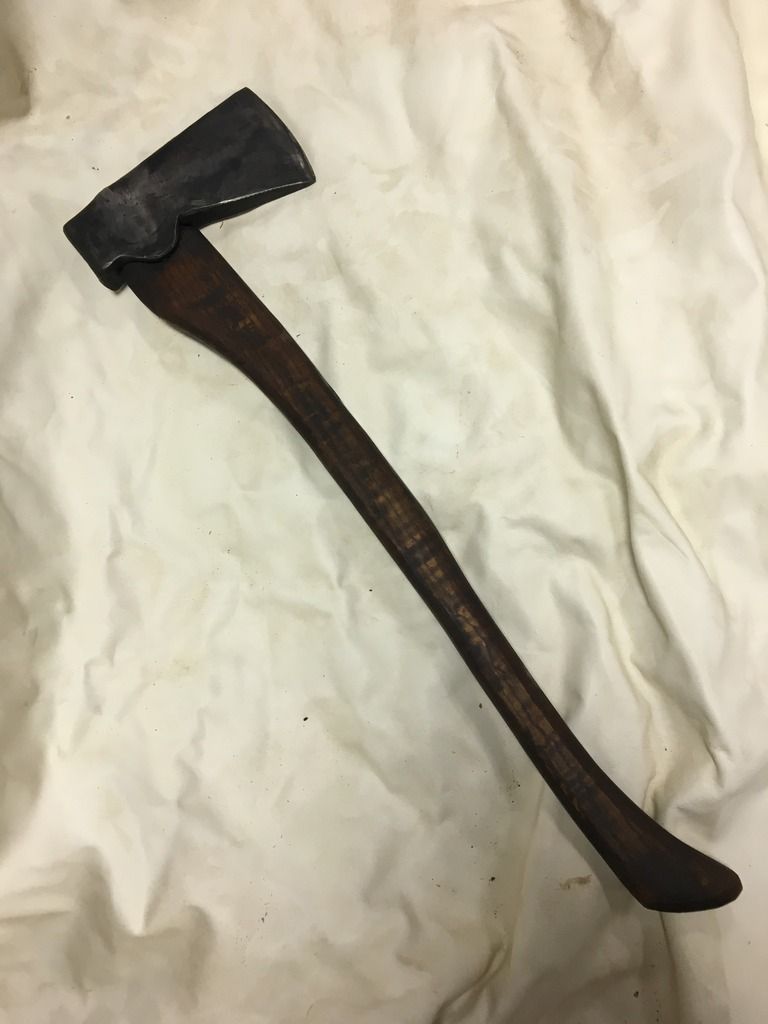buffcreekforge
40 Cal.
- Joined
- Oct 29, 2008
- Messages
- 118
- Reaction score
- 2
I finished another project yesterday. I wanted to build an axe suitable for packing on a trek or walk in camp. I wanted to cut some of the length and weight of a traditional full size axe, but have something more substantial than a belt axe or hatchet. The head of the axe weighs right at 2.5# is 7 inches long and 4 inches across the cutting edge. I made the haft based on examples from museums and Russell's book on trapper accouterments. The handle has a subtle curve as did some of the old examples and is 24 inches long. As always, I appreciate the venue for sharing. I remain your humble servant,
Just Dave :grin:

Just Dave :grin:





